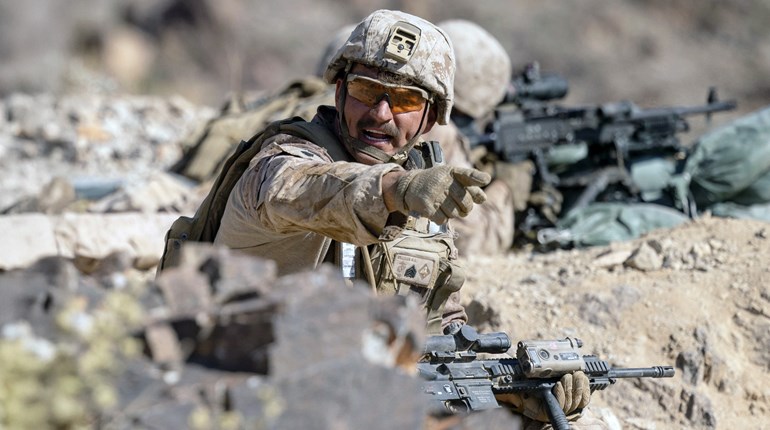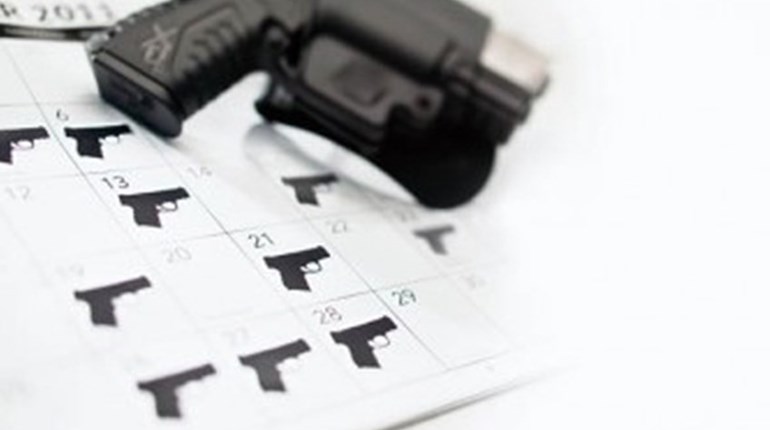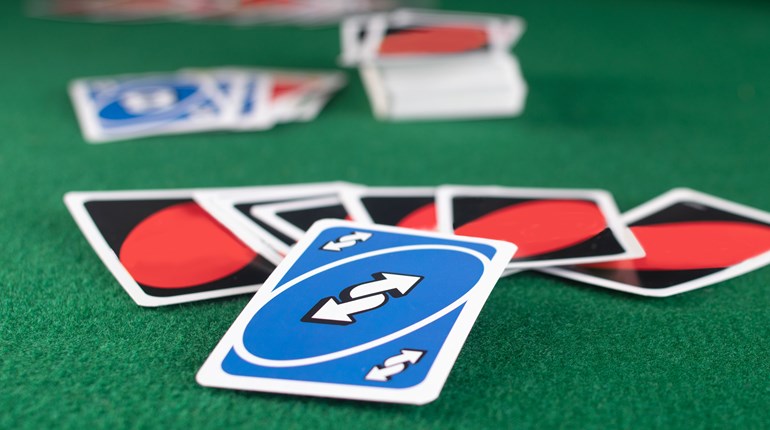
Sometime, somewhere, you’ll require the use of a public restroom stall. After all, like we tell small children, “Everyone has to go.” If you carry a concealed handgun, you will face the universal problem of what to do with that pistol in the stall while your britches are down. Is there some type of “public restroom etiquette” when carrying concealed? There is, and it includes keeping control of your concealed handgun to prevent its loss while doing your business.
With a quick internet search of “guns left in bathrooms,” dozens of cases pop up where a citizen or police officer left his or her handgun in the stall after concluding their restroom activities. The problem was sufficiently prevalent that in 2015, each member of the U.S. Capitol Police in Washington, DC, attended mandatory training because so many of its officers—especially its plainclothes officers—were forgetting their sidearms in stalls and were being disciplined for those actions. Women sometimes leave behind their handguns contained in their purses, while men have left their holstered handgun atop the toilet-paper dispenser or other shelf-like object in the stall. Whether cop or armed citizen, unfortunately, these errant handguns are generally found by subsequent restroom users, and while most are returned safely, that isn’t always the case, and unauthorized people should never have access to your gun.
It is not all that uncommon to see a handgun or empty holster still on the belt in an occupied stall beside you. My adult grandson called a few months ago to say he was washing his hands in a public restroom and a handgun suddenly fell to the floor, coming to rest a few feet in front of the stall, followed by the sheepish voice of its owner asking someone to slide it back to him. Years ago, I heard a handgun hit the deck (with subsequent cursing) in a public restroom, only to see a somewhat-chagrined Sheriff’s deputy exiting the stall in a state of hurried dress to retrieve his handgun from the unoccupied stall next door.
There are many reasons (excuses) given for removing the handgun from its holster when in the loo. One police captain explained he didn’t want his handgun weighing down his pants because the floor was wet from prior users. Others simply didn’t know what else to do, so their handguns were placed on the top of toilet tanks, toilet paper dispensers, toilet-seat-cover dispensers behind the toilet and at least one sink in a single-user restroom (it makes one wonder how that gun was missed if hands were washed, but that’s a different topic). Handguns have also been found in port-a-potties.
Carrying a concealed handgun comes with significant responsibility. Not only are we responsible for safe gun handling and knowing the laws involved in self-defense, but we are also obligated to ensure that others—especially children and criminals—do not gain possession of our firearms. This includes during that extremely vulnerable situation where we are sitting in a public restroom stall with our handguns still holstered and at ankle level, below the bottom of the wall and potentially visible to others.
So, how do we control our concealed handgun while engaged in our necessaries? After almost four decades of carrying concealed and training police officers and armed citizens, I’ve had this question asked of me many times. Here is a solution that has worked well.

Inside the Stall
For those carrying on a belt, I have found that, when preparing to squat, cinching your belt just below your knees will solve multiple potential problems. To prevent theft or soiling of your clothes, after getting your pants below your hips, take a seat, then secure the belt tightly enough to keep it just below knee level with a little outward pressure from your legs. This helps solve the problem of dropping your trousers into a vile mess on the floor left by prior stall patrons. It also provides better security against the theft of your handgun. With your beltline below the bottom of a stall’s wall, a criminal could be tempted to steal your handgun by quickly reaching from under the next stall, giving you little opportunity or position to stop the theft. Keeping your carry rig at your knees keeps it invisible to parties in the adjacent stalls and those who may be waiting outside the stall area. This reduces unwanted attention from potential criminals and any hoplophobic bystanders, while keeping your handgun within easier reach in an emergency.
An added benefit of this maneuver is better control of your pocket contents while lowering and raising your pants. Few of us have not had near misses—or disasters—of something in our pockets falling into the toilet bowl. With constant tension on the belt and waistline of the pants, the pockets and holstered firearm remain in your control, saving that cellphone or wallet (or, heaven forbid, your handgun) from drowning. This also benefits those practicing pocket carry, since it keeps the pocket holster containing your pistol from falling out while keeping it closer to your hands and body.

Leaving the Stall/Restroom
Before you exit the privy, habitually (and unobtrusively) pat yourself down. After locking myself out of our home (for the second time) as a young teenager, my dad suggested I create a habit he’d established for himself every time he transitioned from home, office, vehicle or restaurants, etc. He’d subtly touch his front pockets (keys in one, cash and a pocketknife in the other), then brush to the rear pocket for his wallet. I, too, created that habit and my days of locking myself out of the house were over.
When I began carrying concealed, I incorporated these items (now including a cellphone) into the pattern as well. The pattern I use to pat myself down and ensure I have everything is front pockets (keys in one, spare magazine, cash and pocketknife in the other), then I use my forearms to surreptitiously confirm both handgun and cellphone on either hip, and then finish with my wallet in the back pocket. While I don’t take my handgun out of the holster in a public place unless it’s a life-threatening emergency requiring its deployment, I, like most others, do use my cellphone rather a lot. The aforementioned sequence has saved me from having to run back into a restaurant hoping the phone was still on the table. It can help you make sure you never leave your concealed-carry pistol anywhere it shouldn’t be left—which is, of course, anywhere in public.
For those who practice off-body carry, such as in a purse or fanny pack, remembering to check for that conveyance every time you sit down and stand up—whether in a restroom, at a table, in your car, etc.—will also make that part of a routine. Establishing such a routine will help prevent you from leaving behind the bag containing your pistol, helping to avoid losing immediate control of your firearm.
In these times of increasingly strident voices demanding punishment of others who have human lapses of distraction and an increasingly brazen criminal population who may make an attempt to steal your handgun, concealed-carry bathroom etiquette requires us to control our handguns at all times, even when “we have to go.” There is no foolproof method, but by taking a thoughtful approach to ensure the security of our handguns in this extremely common and defenseless situation, we can better secure our pistols and have less likelihood of embarrassment, or worse, a tragedy, occurring.
About the Author
George T. Williams is a full-time police training specialist and expert witness who also actively trains armed citizens in firearms, tactics and self-defense, and has since 1978. He has had more than 250 articles published on varied topics including employing firearms in defense of life, tactics, liability prevention and more.





































